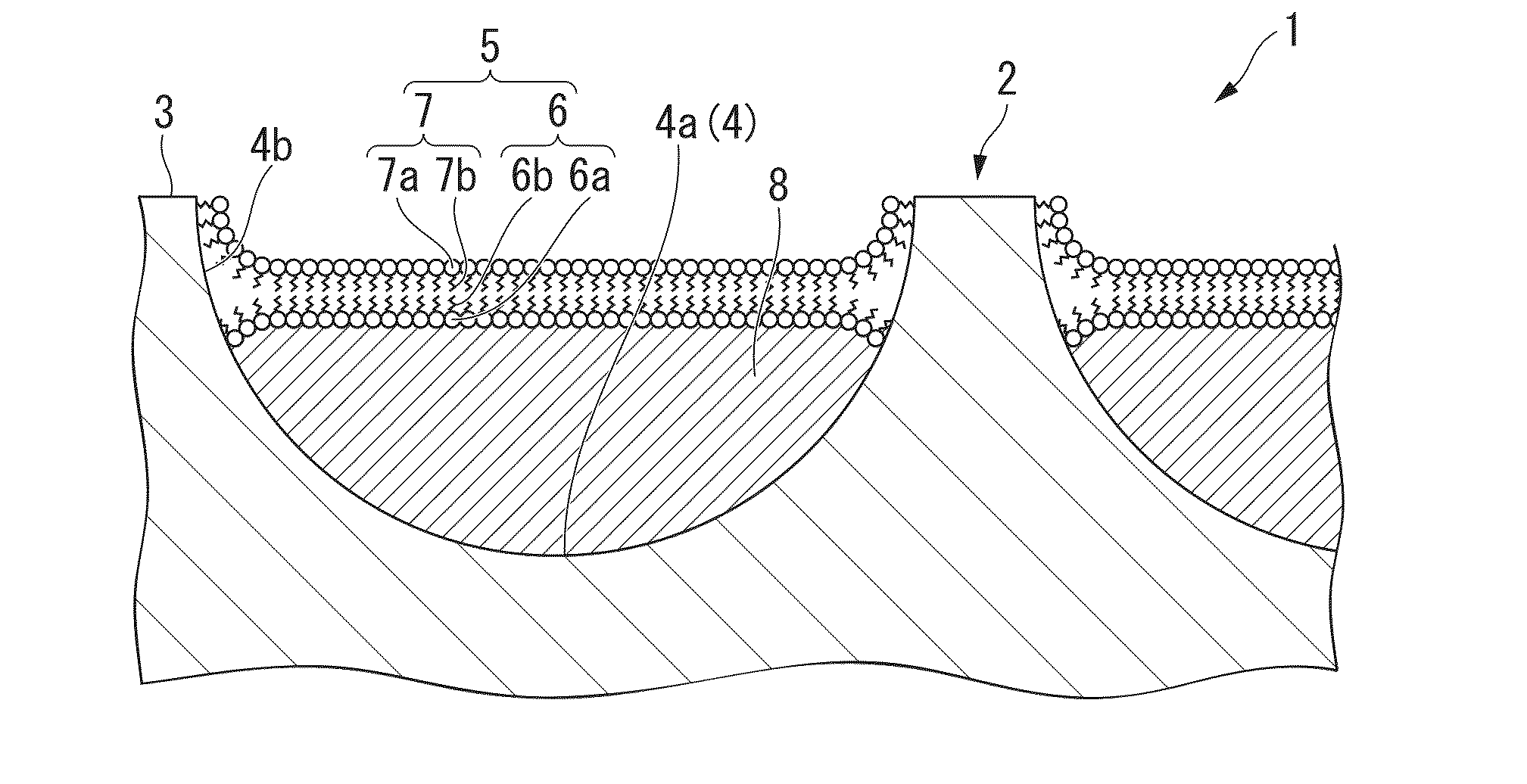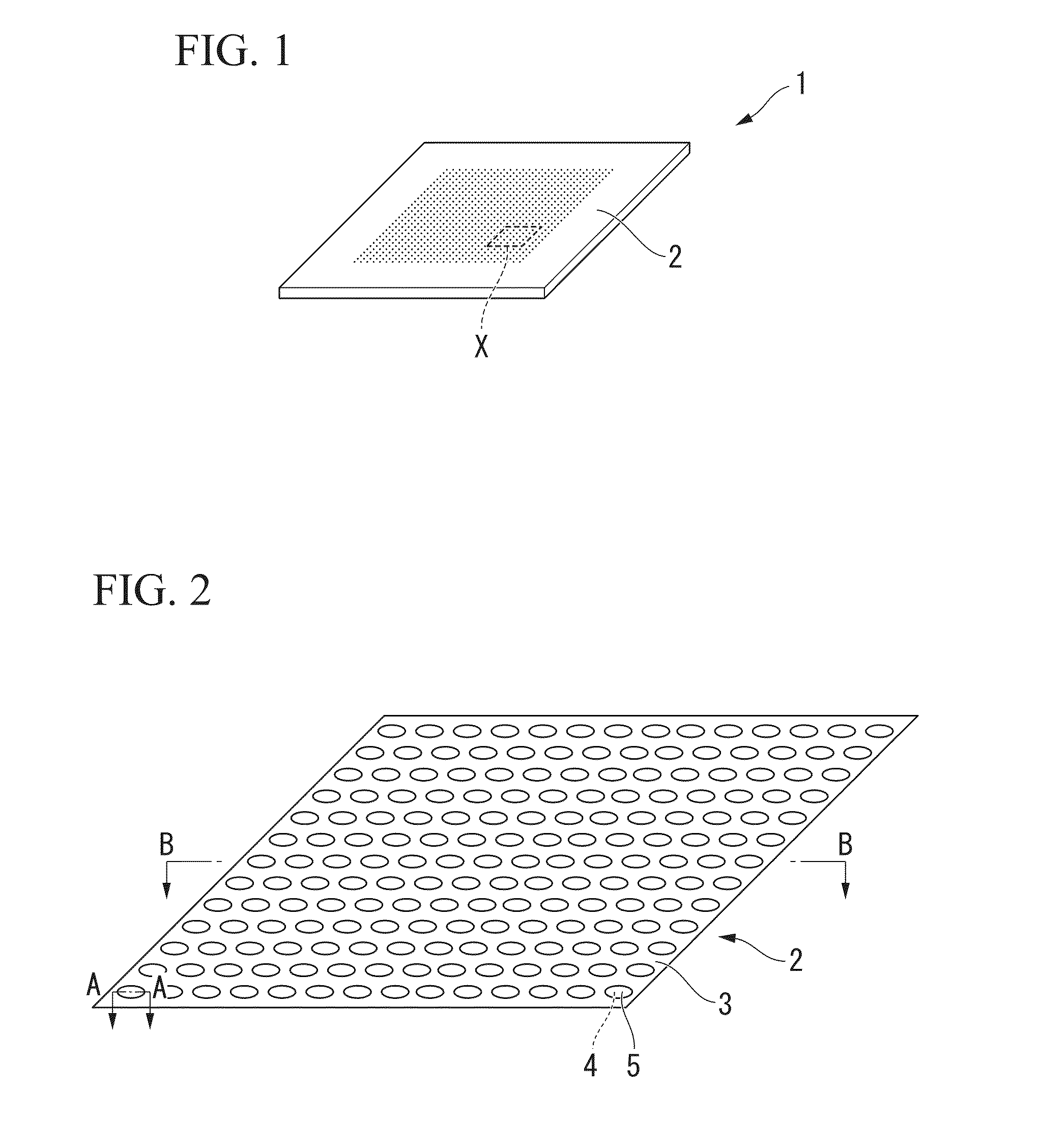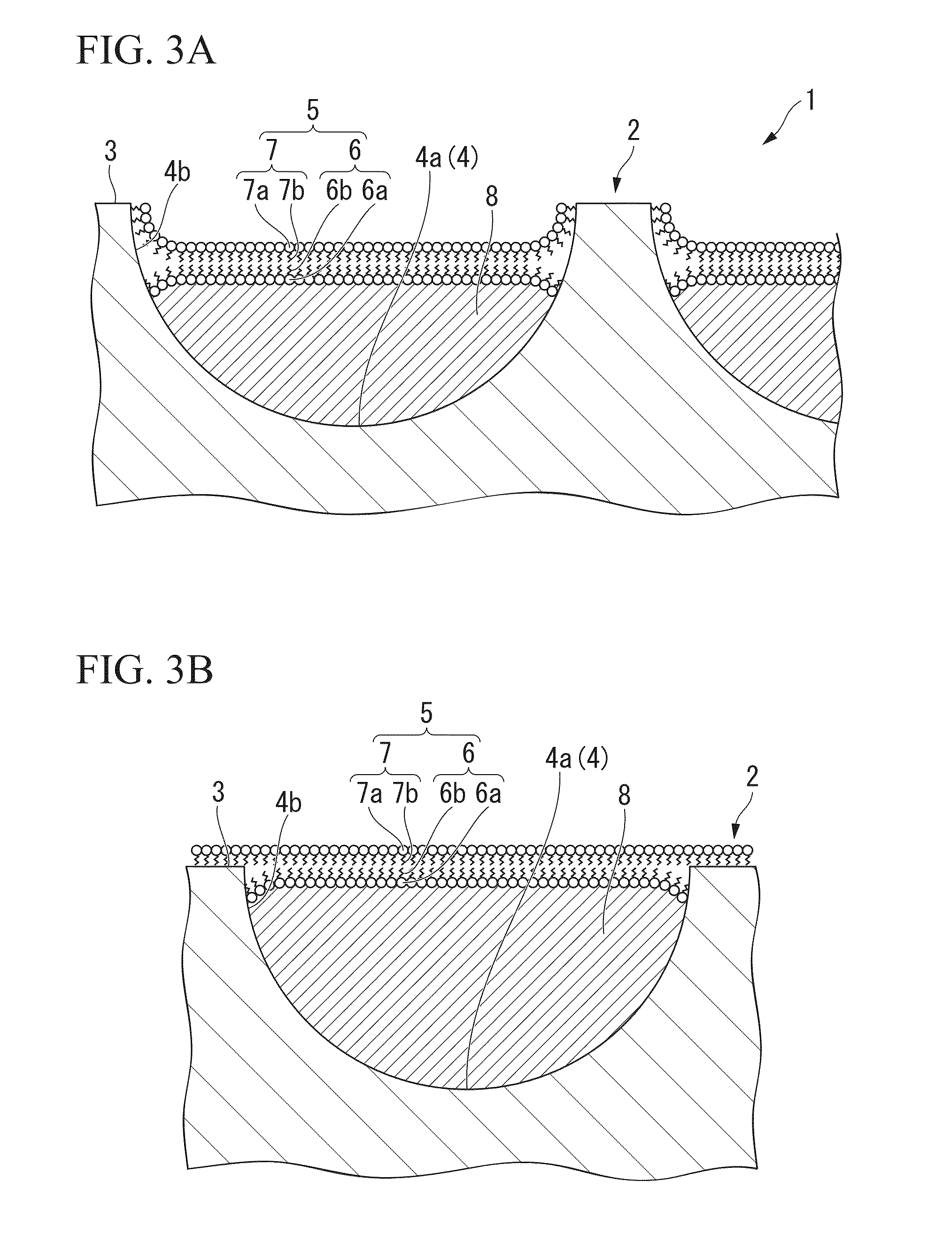Membrane vesicle recovery device, membrane vesicle recovery method, and membrane vesicle analysis method
- Summary
- Abstract
- Description
- Claims
- Application Information
AI Technical Summary
Benefits of technology
Problems solved by technology
Method used
Image
Examples
first embodiment
[0065]A first embodiment of the present invention will be described. FIG. 1 is a perspective view showing a membrane vesicle recovery device of this embodiment. FIG. 2 is an enlarged view of the section shown by a reference numeral X in FIG. 1. FIG. 3 is a schematic cross-sectional view taken along line A-A of FIG. 2.
[0066]As shown in FIGS. 1 to 3B, a membrane vesicle recovery device 1 of this embodiment includes a reaction base 2, a fused membrane 5, and a filler 8.
[0067]The reaction base 2 is a plate member in which a plurality of recessed sections 4 are formed on a surface 3. In the reaction base 2, an opening end 4b of a recessed section 4 and the surface 3 are hydrophobic. In this embodiment, the reaction base 2 is made of glass or silicon. A fine well which forms a recessed section 4 is produced on the surface of the reaction base 2 after the surface of the reaction base 2 is subjected to hydrophobic processing through disilazane processing. In this embodiment, an inner wall s...
second embodiment
[0100]A second embodiment of the present invention will be described. FIG. 18 is a schematic cross-sectional view showing a membrane vesicle recovery device of this embodiment and is a cross-sectional view of the same line as line B-B of FIG. 2. FIG. 19 is a schematic enlarged view of FIG. 18.
[0101]As shown in FIGS. 18 and 19, a membrane vesicle recovery device 1A of this embodiment includes a reaction base 2A made of a different material from that of the reaction base 2, instead of the reaction base 2 described in the first embodiment.
[0102]In this embodiment, the surface 3A of the reaction base 2A is hydrophilic. For example, the reaction base 2A of this embodiment is formed of a hydrophilic material. In the case where the base material of the reaction base 2A is formed of a hydrophobic material, hydrophilic processing is performed on the outer surface of the base material after recessed sections 4 are molded. The hydrophilic processing is reforming of the surface, for example, pl...
third embodiment
[0105]A third embodiment of the present invention will be described. FIG. 20 is a schematic enlarged cross-sectional view showing a membrane vesicle recovery device of this embodiment.
[0106]In a membrane vesicle recovery device 1B of this embodiment shown in FIG. 20, a fused membrane 5 contains a membrane charge adjustment substance 12 promoting fusion between a membrane vesicle and the fused membrane 5.
[0107]The membrane charge adjustment substance 12 contains at least one of a membrane-destroying peptide, a membrane fusogenic polymer, a pH-sensitive polymer, and virus-derived membrane fusion protein.
[0108]In the membrane vesicle recovery device 1B of this embodiment, when a solution containing exosomes is added to the fused membrane 5 so as to be brought into contact with the fused membrane 5, the membrane charge adjustment substance 12 incorporated into the fused membrane 5 promotes membrane fusion on the membrane vesicle by adjusting the membrane charge of the fused membrane 5.
[...
PUM
| Property | Measurement | Unit |
|---|---|---|
| Shape | aaaaa | aaaaa |
| Content | aaaaa | aaaaa |
| Hydrophilicity | aaaaa | aaaaa |
Abstract
Description
Claims
Application Information
 Login to View More
Login to View More - R&D
- Intellectual Property
- Life Sciences
- Materials
- Tech Scout
- Unparalleled Data Quality
- Higher Quality Content
- 60% Fewer Hallucinations
Browse by: Latest US Patents, China's latest patents, Technical Efficacy Thesaurus, Application Domain, Technology Topic, Popular Technical Reports.
© 2025 PatSnap. All rights reserved.Legal|Privacy policy|Modern Slavery Act Transparency Statement|Sitemap|About US| Contact US: help@patsnap.com



